How ITMO University works: a tour of our cyber-physical systems lab
On the basis of the ITMO University, many laboratories of different directions are opened: from bionics to the optics of quantum nanostructures. Today we will show you how our cyber-physical systems laboratory looks and tell you more about its projects.

The Cyber-Physical Systems Laboratory is a specialized platform for conducting research activities in the field of cyber-physics.
')
The laboratory is considered a multidisciplinary platform, so it comes here from different faculties: specialists in control systems, computing technology, information security. We wanted to gather them all in one place so that they could freely communicate, exchange ideas, opinions and knowledge. So this place appeared.
The laboratory is open in the former premises of the Department of Theoretical and Applied Mechanics. The students themselves thought over the work areas - the audience turned out to be multifunctional.
In the main hall, workplaces with personal computers are placed along the walls. In the middle there is a large square platform - a testing ground for robots.
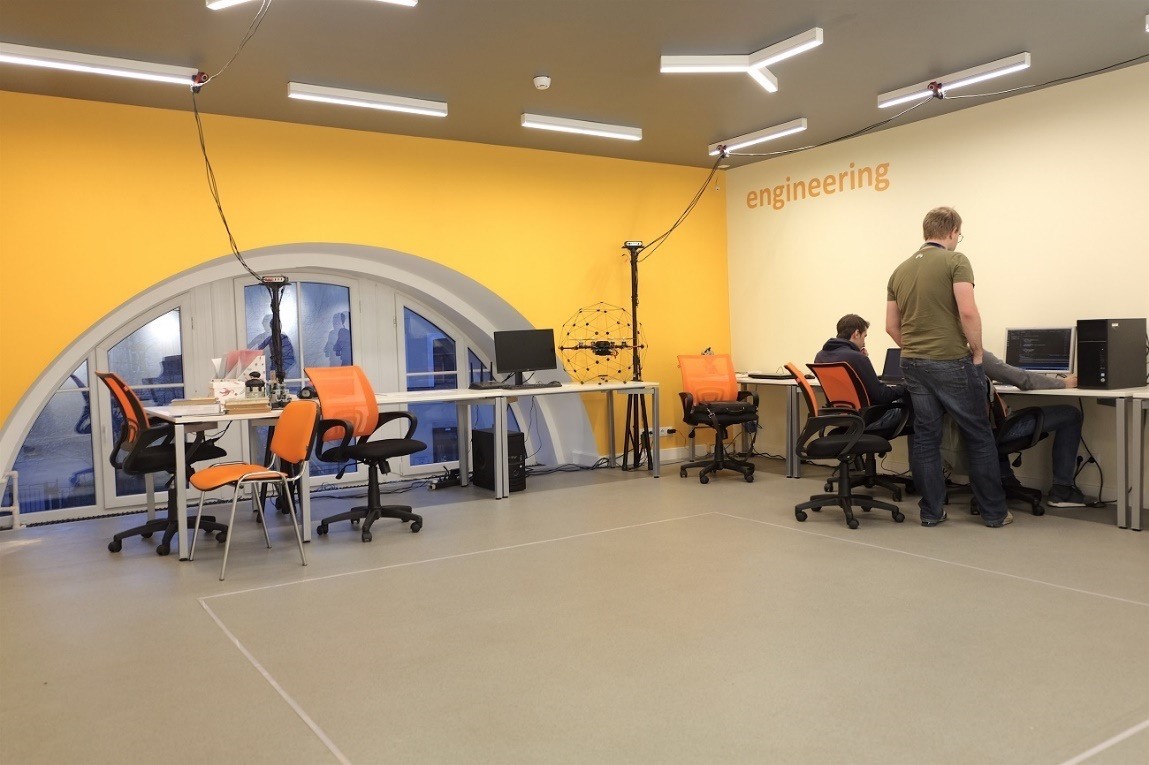
Within this test site, control systems for multi-agent robots and mobile robots moving in a maze are being tested. Still here launch quadrocopter, prepared for flying indoors. It is needed to refine the control algorithms.

Hanging from the ceiling are cameras that play the role of a motion capture system that tracks the location of the drone and gives it feedback.
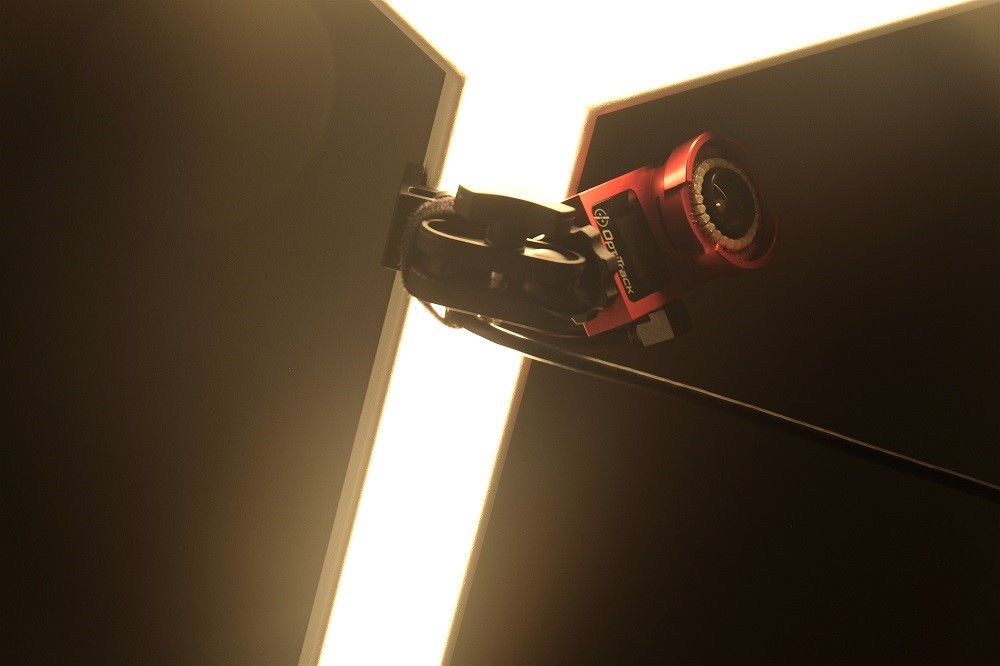
The audience itself is transformable - it has a sliding wall that can isolate the workspace from the “mini-hall” for conferences.
For the seminars there are all conditions: chairs, a projector, a screen, a board for notes.

It can accommodate a small group of students.

Behind the “transparent wall” (in the photo above) there is another room - this is another working area with stationary computers and laptops.
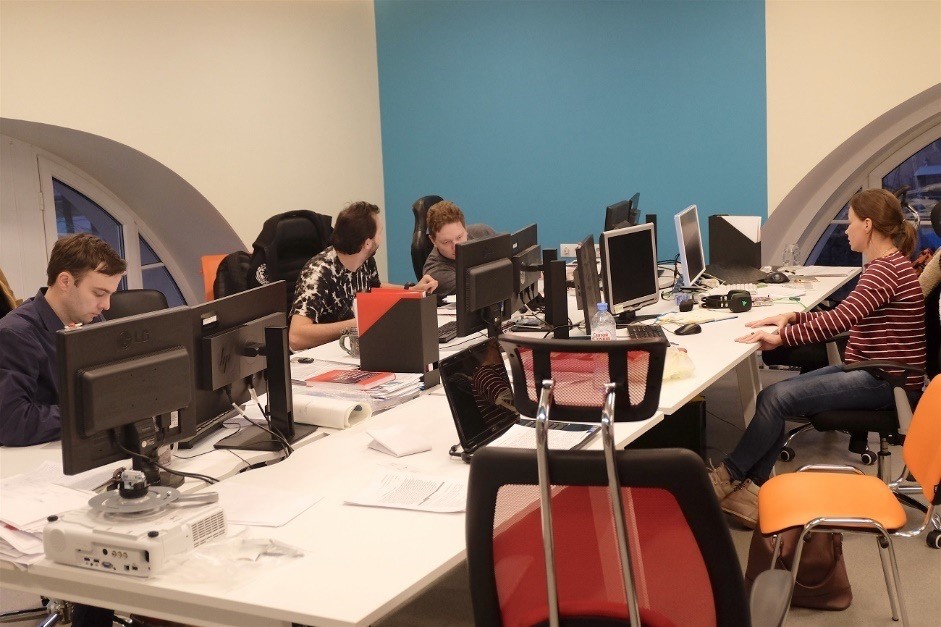
Also in the laboratory there is a large white wall, which is suitable for analyzing ideas, visualizing algorithms, programs, business processes.
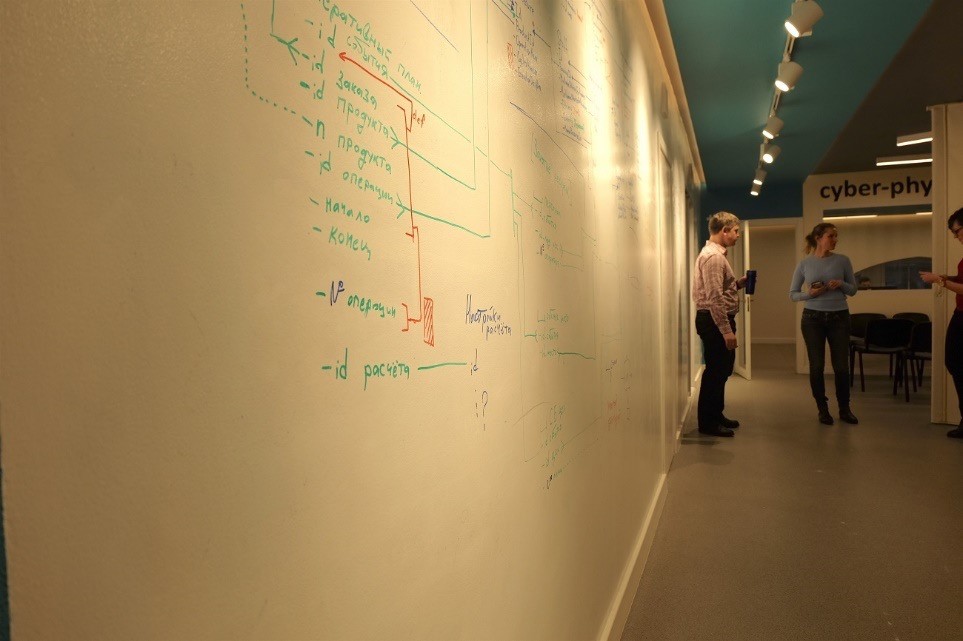
You can paint the wall in the coffee room - there is a large chalk board there - a discussion of ideas behind the bar is always much more active.

Over time, a small TV or niche screen will appear here.
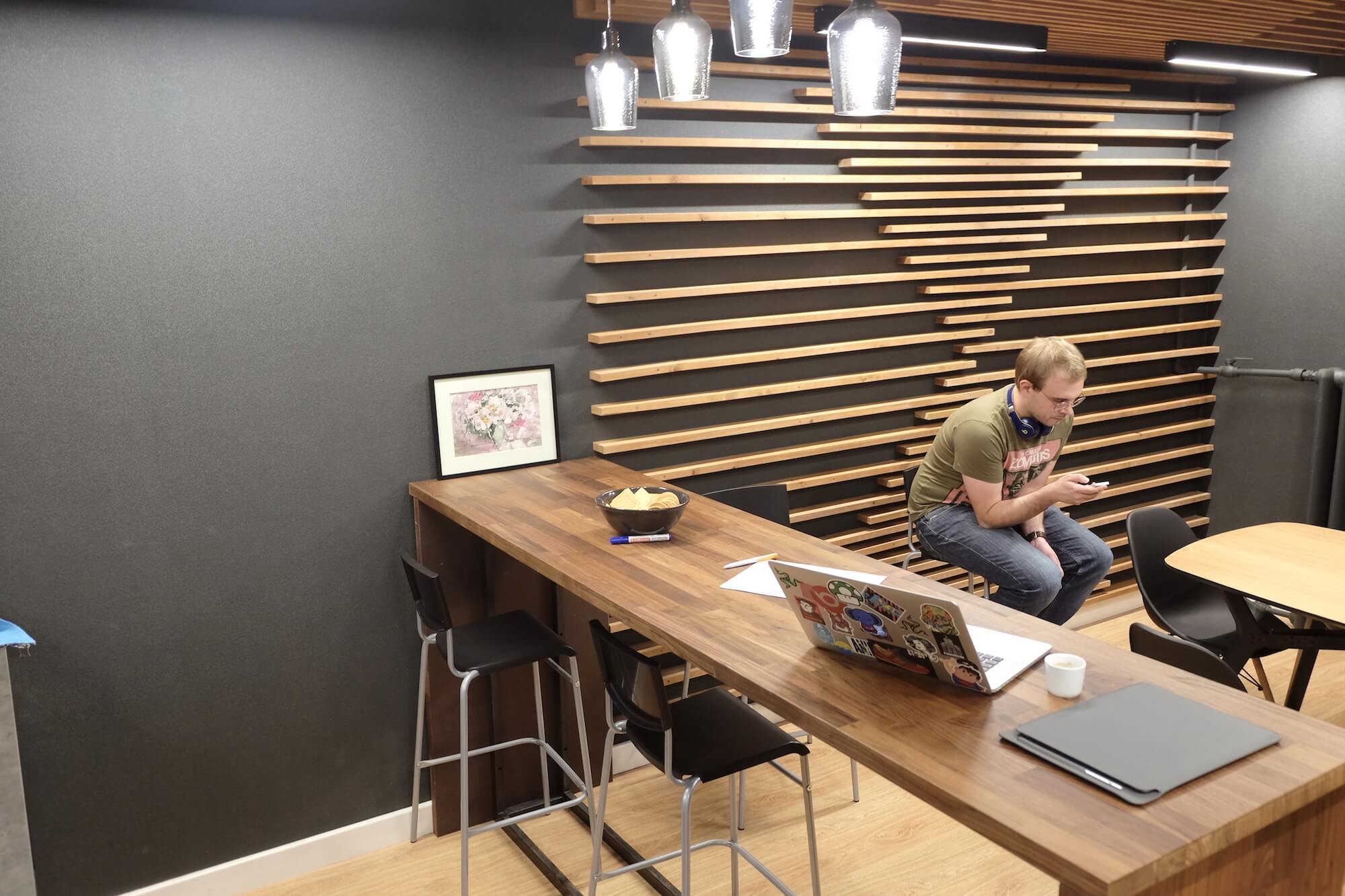
The laboratory of cyber-physical systems is working on several projects at once.
An example would be a system for optimizing locomotive assembly processes . Students and laboratory staff develop algorithms that will automatically generate a schedule for the production of train parts. Technologists, programmers and mathematicians take part in the project. The former are responsible for the systematization of knowledge and requirements for production processes, the latter for the optimization of algorithms. Programmers are engaged in software that “brings together” the developments of the whole team.
As another example of laboratory development, a flight simulator can be given to train professional pilots. This is a complex cyber-physical system that uses virtual reality technology and simulates all the processes occurring in the aircraft. Even developed a special seat that simulates the load on the pilot.
The laboratory also develops large commercial projects. For example, in the framework of the Industry 4.0 initiative, employees, graduate students of ITMO University are developing an intelligent enterprise management system for the Diakont group of companies. To do this, you need to create a cyber-physical ecosystem, where everything is automated - from product design and robot behavior to raw material procurement and product marketing. Now employees solve the task of automating technological processes, developing optimization algorithms, neural networks and AI systems for these purposes.
The laboratory is managed by the scientific and technical council of the “Computer Technologies and Management” Mega-Faculty. Key decisions regarding the work of the laboratory are made by employees who are selected on a competitive basis. These are candidates of science in the field of computing, control systems, electronics, information security and instrument engineering.
A laboratory takes up research if most representatives support it. During the execution of the project, the current management is carried out by the one to whose competences the topic fits best. The cast is assembled from several faculties for specific tasks. This allows you to look at the problem from different angles. Thus, the situation is excluded when the team forgets about an important component until the time when making changes to the algorithms becomes impossible. Thus, the laboratory has become not only a pilot project for the organization of interdisciplinary research, but also a testing ground for implementing “shared governance”.
What else do we have on Habré:

Quick reference
The Cyber-Physical Systems Laboratory is a specialized platform for conducting research activities in the field of cyber-physics.
')
Cyber-physical systems involve the integration of computing resources into physical. processes. Such systems can be based on 3D printing, the Internet of things, augmented reality. For example, autonomous cars are the result of the work of cyber-physicists.
The laboratory is considered a multidisciplinary platform, so it comes here from different faculties: specialists in control systems, computing technology, information security. We wanted to gather them all in one place so that they could freely communicate, exchange ideas, opinions and knowledge. So this place appeared.
What's inside
The laboratory is open in the former premises of the Department of Theoretical and Applied Mechanics. The students themselves thought over the work areas - the audience turned out to be multifunctional.
In the main hall, workplaces with personal computers are placed along the walls. In the middle there is a large square platform - a testing ground for robots.

Within this test site, control systems for multi-agent robots and mobile robots moving in a maze are being tested. Still here launch quadrocopter, prepared for flying indoors. It is needed to refine the control algorithms.

Hanging from the ceiling are cameras that play the role of a motion capture system that tracks the location of the drone and gives it feedback.

The audience itself is transformable - it has a sliding wall that can isolate the workspace from the “mini-hall” for conferences.
For the seminars there are all conditions: chairs, a projector, a screen, a board for notes.

It can accommodate a small group of students.

Behind the “transparent wall” (in the photo above) there is another room - this is another working area with stationary computers and laptops.

Also in the laboratory there is a large white wall, which is suitable for analyzing ideas, visualizing algorithms, programs, business processes.

You can paint the wall in the coffee room - there is a large chalk board there - a discussion of ideas behind the bar is always much more active.

Over time, a small TV or niche screen will appear here.

Projects and Development
The laboratory of cyber-physical systems is working on several projects at once.
An example would be a system for optimizing locomotive assembly processes . Students and laboratory staff develop algorithms that will automatically generate a schedule for the production of train parts. Technologists, programmers and mathematicians take part in the project. The former are responsible for the systematization of knowledge and requirements for production processes, the latter for the optimization of algorithms. Programmers are engaged in software that “brings together” the developments of the whole team.
As another example of laboratory development, a flight simulator can be given to train professional pilots. This is a complex cyber-physical system that uses virtual reality technology and simulates all the processes occurring in the aircraft. Even developed a special seat that simulates the load on the pilot.
The laboratory also develops large commercial projects. For example, in the framework of the Industry 4.0 initiative, employees, graduate students of ITMO University are developing an intelligent enterprise management system for the Diakont group of companies. To do this, you need to create a cyber-physical ecosystem, where everything is automated - from product design and robot behavior to raw material procurement and product marketing. Now employees solve the task of automating technological processes, developing optimization algorithms, neural networks and AI systems for these purposes.
Who is at the helm
The laboratory is managed by the scientific and technical council of the “Computer Technologies and Management” Mega-Faculty. Key decisions regarding the work of the laboratory are made by employees who are selected on a competitive basis. These are candidates of science in the field of computing, control systems, electronics, information security and instrument engineering.
A laboratory takes up research if most representatives support it. During the execution of the project, the current management is carried out by the one to whose competences the topic fits best. The cast is assembled from several faculties for specific tasks. This allows you to look at the problem from different angles. Thus, the situation is excluded when the team forgets about an important component until the time when making changes to the algorithms becomes impossible. Thus, the laboratory has become not only a pilot project for the organization of interdisciplinary research, but also a testing ground for implementing “shared governance”.
What else do we have on Habré:
Source: https://habr.com/ru/post/435250/
All Articles